Why sequencing matters more than customer outcomes when building software
Dependency-based sequencing is a powerful technique for managing complex projects. By mapping out the interrelationships between tasks and prioritizing based on dependencies, you can minimize rework, enable smoother workflows, and achieve project goals faster.
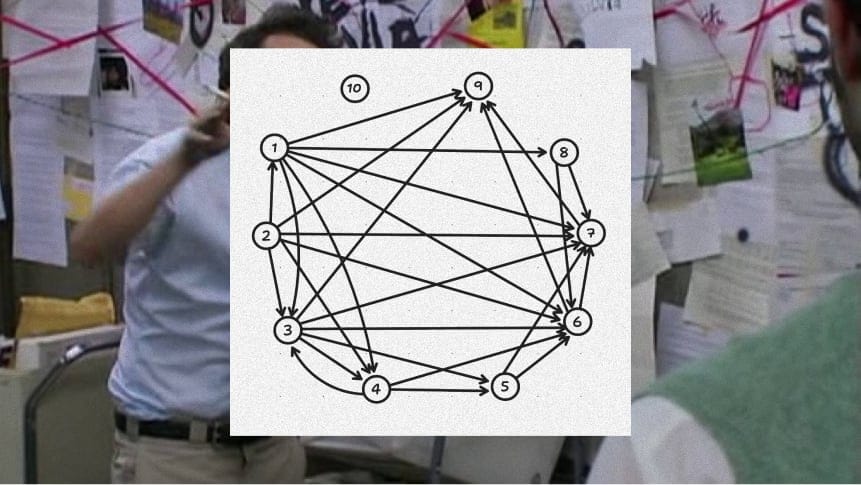
In product management, we often focus on outputs vs. outcomes. But the fundamental question we should ask is: What sequence should we tackle our tasks in?
The right sequence is crucial for a project's success.
In any complex project, there is an inherent sequence to the work, whether we recognize it or not.
When we fail to consider the natural order of operations, we often end up with a tangled mess of dependencies and delays.
Ignoring the sequence doesn't make it go away; it just sets us up for frustration and inefficiency down the line.
I learned this the hard way when my team embarked on a major product update cycle.
A costly lesson in sequencing
Despite our best intentions and hard work, we shipped a week late and wasted hours on rework.
The reason?
I had prioritized solutions based on what the customers end goal should be, ignoring the critical dependencies between tasks.
This mistake is all too common. But there’s a powerful technique that can help: dependency-based sequencing.
Most prioritize tasks based on desired outcomes, assuming the sequence will sort itself out.
It’s like building a house without considering the construction order.
Dependency-based sequencing is superior because it minimizes rework, enables smoother workflows, and speeds up progress.
By frontloading enabling work, you clear the path for rapid progress.
It can feel counterintuitive, especially to stakeholders eager for immediate results.
As a leader, you advocate for the method that will lead to the best long-term outcomes. In complex projects, the task sequence is as important as the tasks.
Successful product managers identify hidden work structures and leverage them to their advantage.
If I had mapped out how the workstreams needed to build upon each other, I would have avoided delays and rework.
We can learn a lot from military strategists about sequencing complex operations.
The D-Day invasion of Normandy in World War II involved coordinating thousands of ships, planes, and troops across the English Channel.
Military planners carefully sequenced the invasion.
- The initial bombing softened German defenses.
- Minesweepers cleared the way for the fleet.
- The infantry landed first to secure the beaches, allowing tanks and heavy equipment to follow.
Each phase enabled the next.
If the sequencing had been off, the invasion could have failed if the bombers had struck too late or the minesweepers too early.
The key was to understand the interrelationship between all the moving pieces.
Seeing the big picture
We must look beyond individual tasks to understand how they fit together. Like a military operation, a complex project is more than its parts - it’s about the dependencies between them.
This realization led me to a powerful tool I neglected: “Unfolding the Interrelationship diagram.”
This technique maps out connections and dependencies between work streams. The key was to examine how different work “buckets” connect and build upon each other.
Putting theory into practice
Let’s look at organizing a housewarming dinner party to see how this works.
If I dumped all the tasks for this project, I’d end up with this list:
Task dump
- Set the date and time.
- Create the guest list.
- Send the invitations.
- Plan the menu.
- Shop for groceries and supplies.
- Prepare food and drinks.
- Set up and decorate the space.
- Clean the house before guests arrive.
- Greet and host the party.
- Clean up after the party.
If I were to organize these tasks based on the outcome of a successful party, I would organize them like this:
Outcome-based sequencing
- Send invitations.
- Plan the menu.
- Decorate the space.
- Shop for food and supplies.
- Prepare food and drinks.
- Set a date.
- Create a guest list.
- Clean the house.
- Host the party.
- Clean up.
Following the outcome-based sequencing, you might send out invitations first thing to get guests excited.
But then you realize you don’t have a date yet and are unsure how many people are coming or what food you’re serving. You’re stuck until you sort out those details.
You might plan an elaborate menu and buy all the ingredients, only to discover your kitchen needs a deep clean before you can start cooking. Now you’re stuck cleaning instead of prepping.
What if a friend had a peanut allergy, and you didn’t know because the guest list wasn’t final? You’d have to rethink the menu at the last minute.
Working in an outcome-based sequence creates extra work and a headache because you paint yourself into a corner.
Now, let’s see how the sequence works by unfolding their interrelationship.
Dump all your tasks into a tool like tldraw and number them.
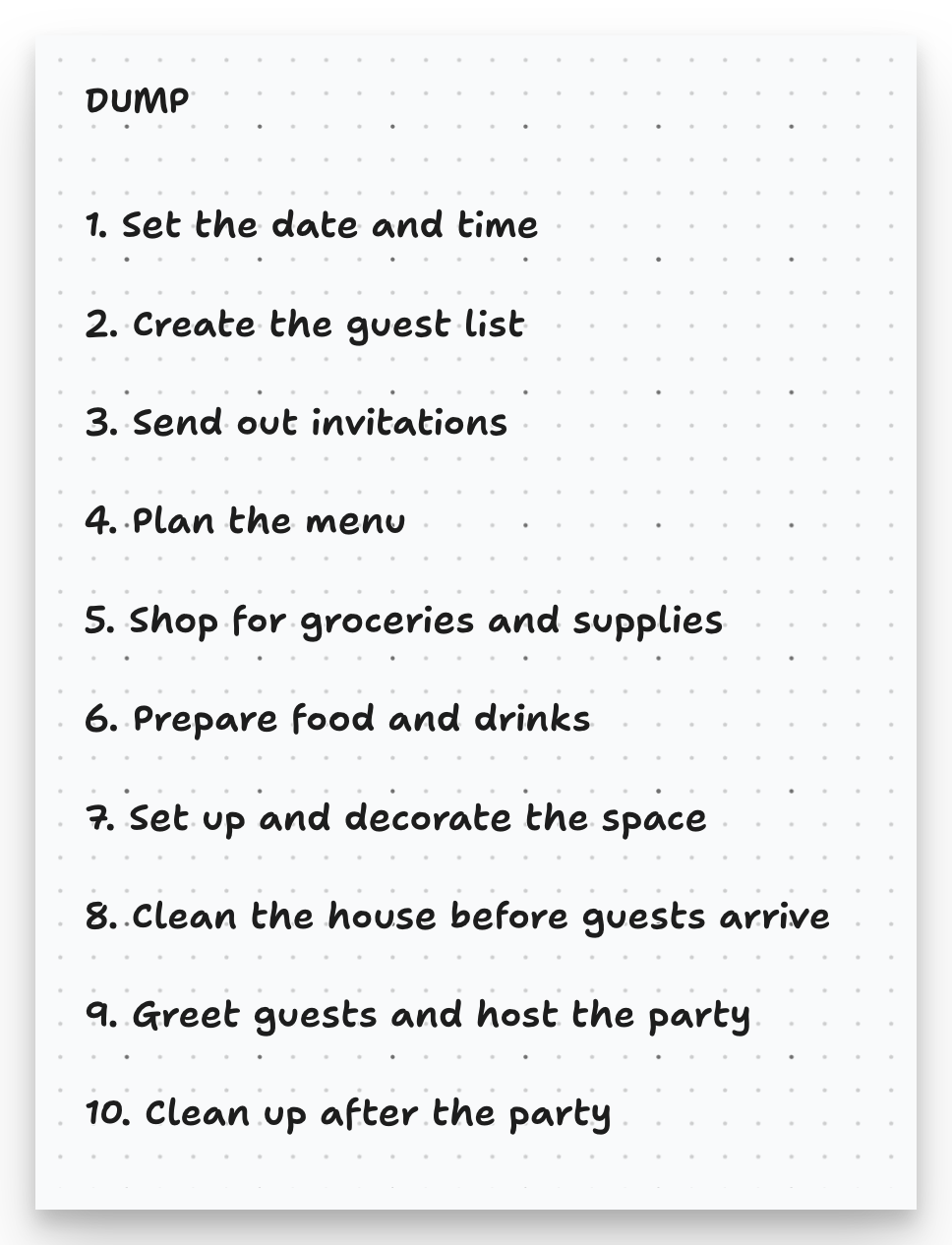
Put your numbered list in a circle, as shown below.
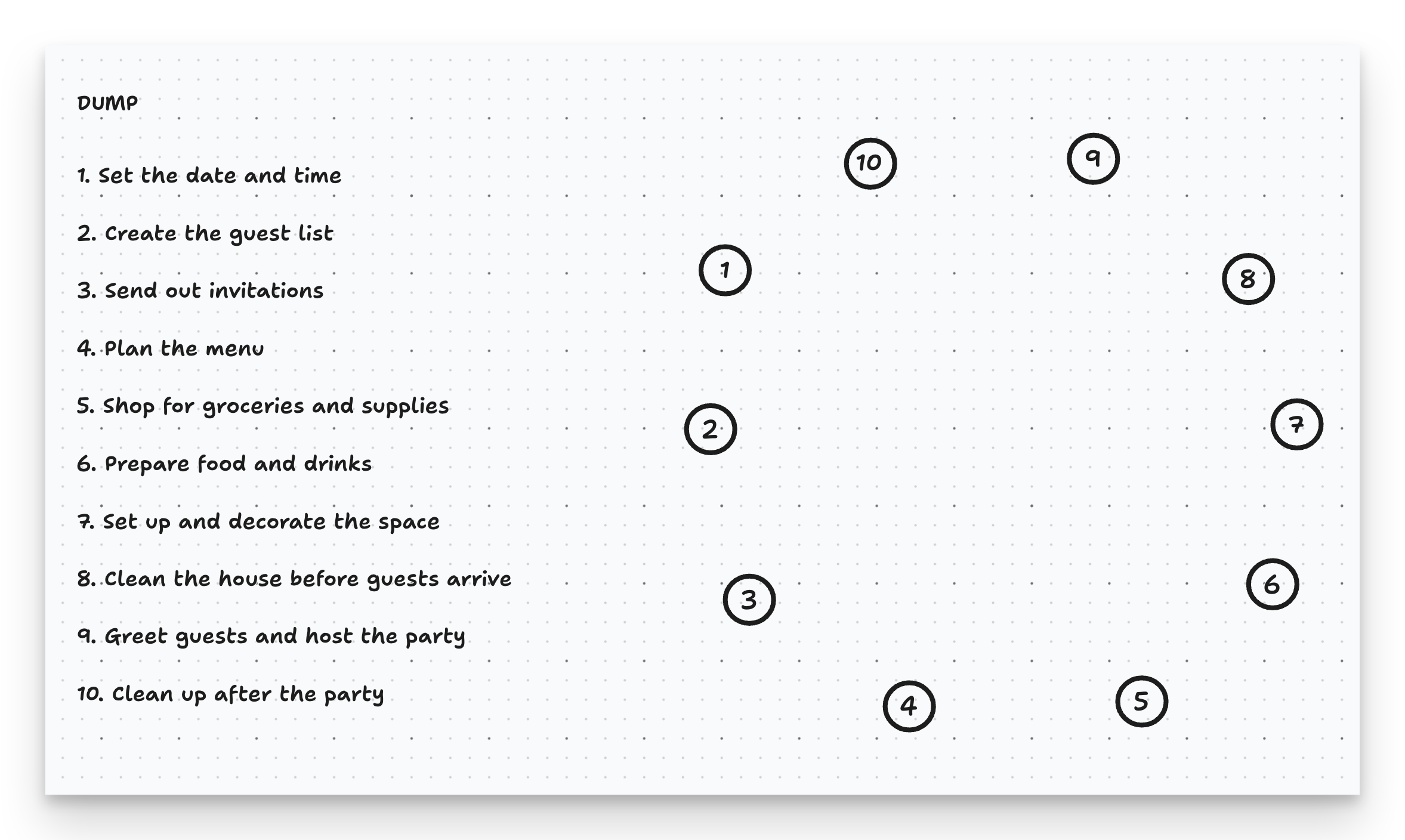
For each bucket or task, ask: “Does doing this help me with that?” If yes, draw a connecting arrow.
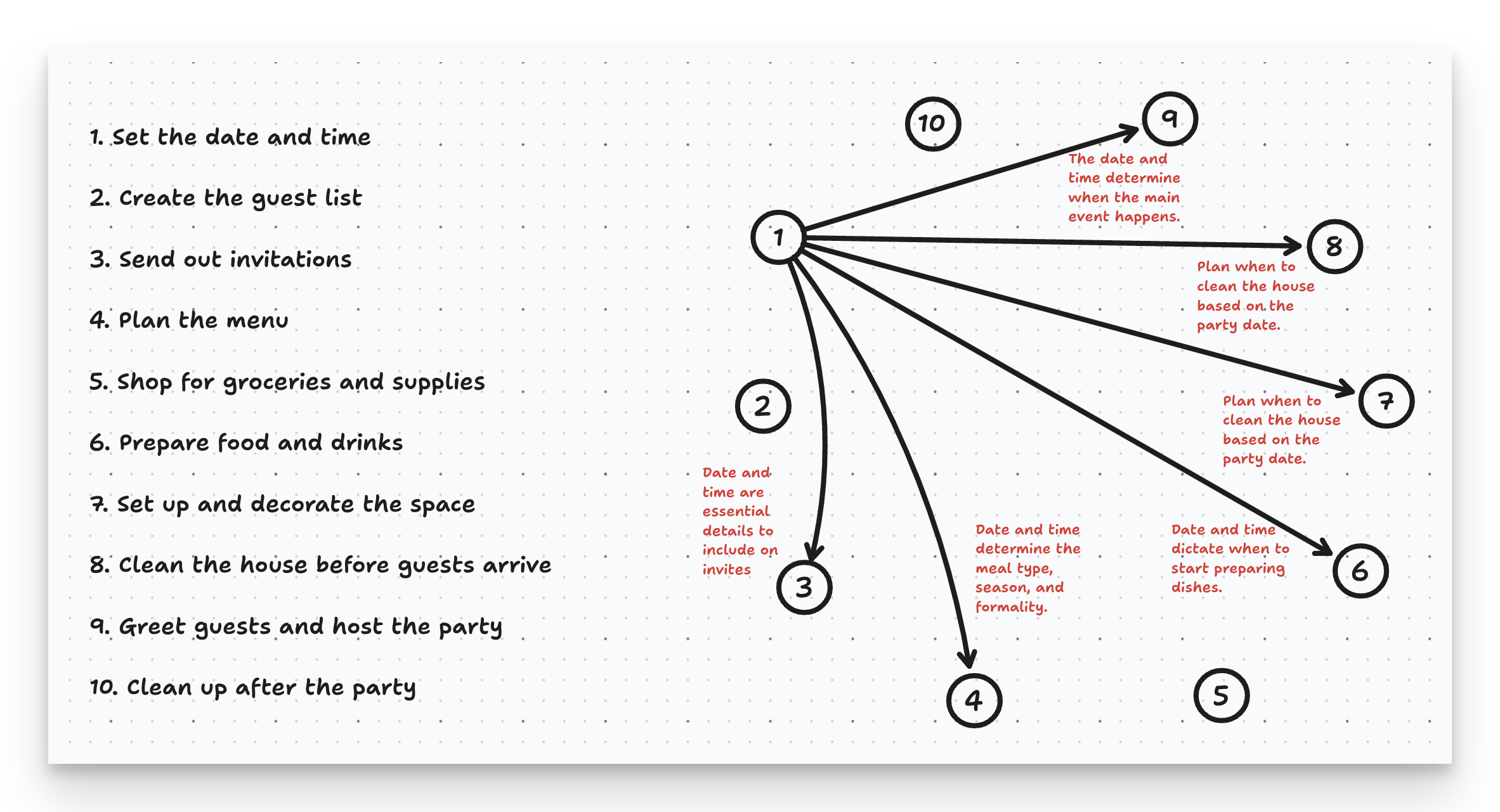
Analyze all buckets in both directions.
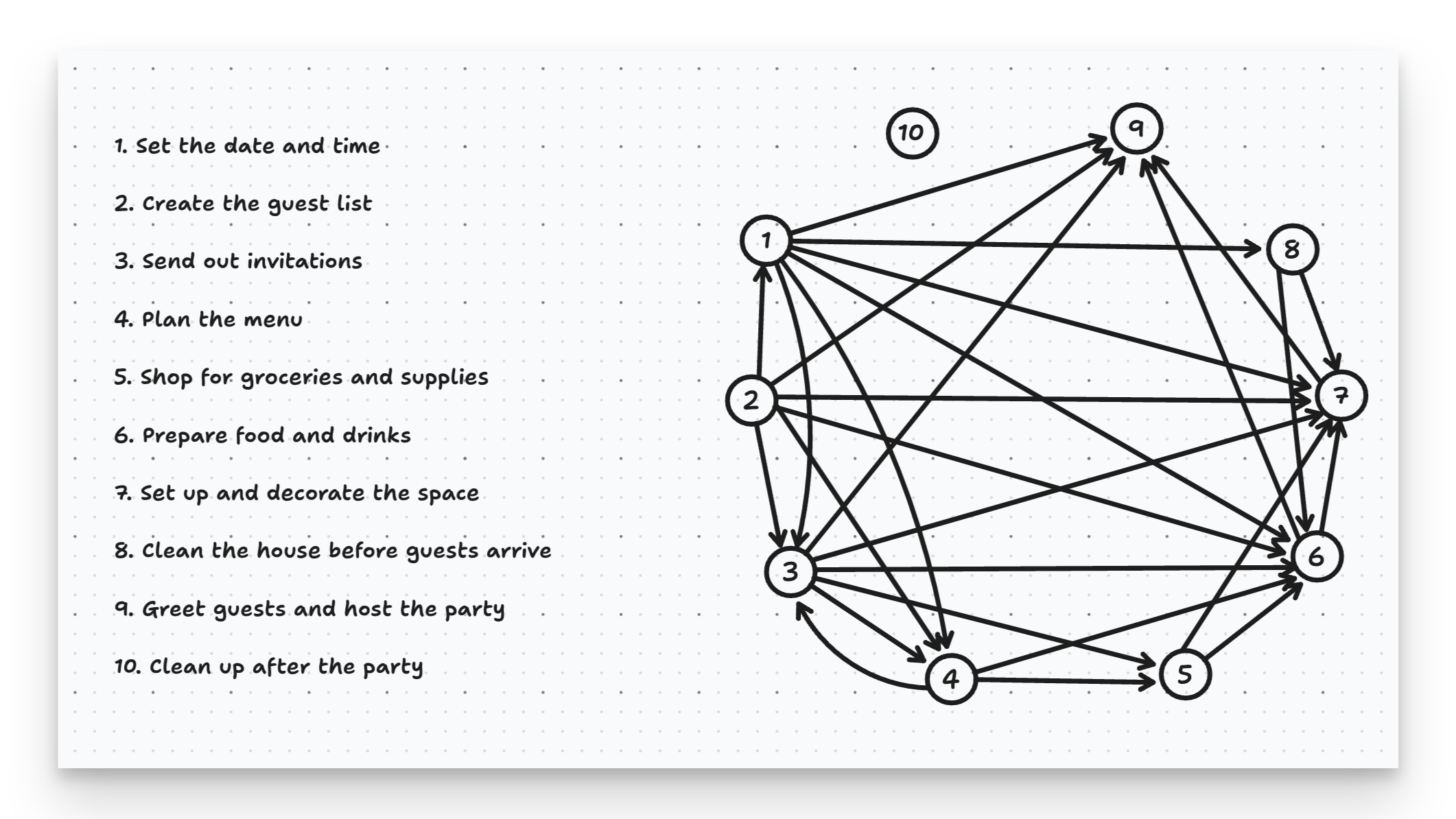
Zoom in on each task and count the outgoing and incoming arrows.
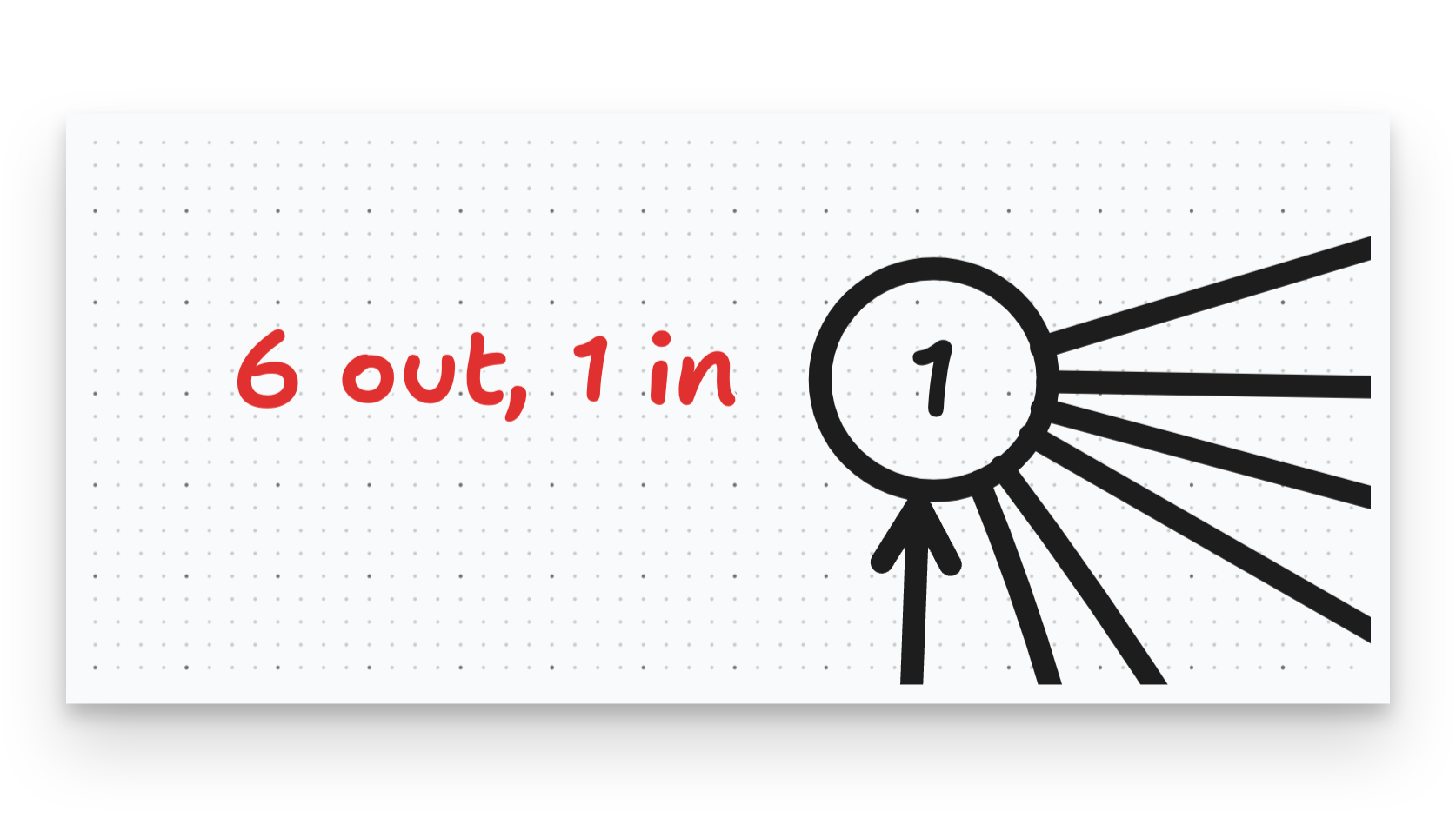
Once you’ve marked everything, it’s time to order them.
The buckets/tasks with the most outgoing arrows have the most influence in opening up the system of work. So, when you organize as such, you get this order:
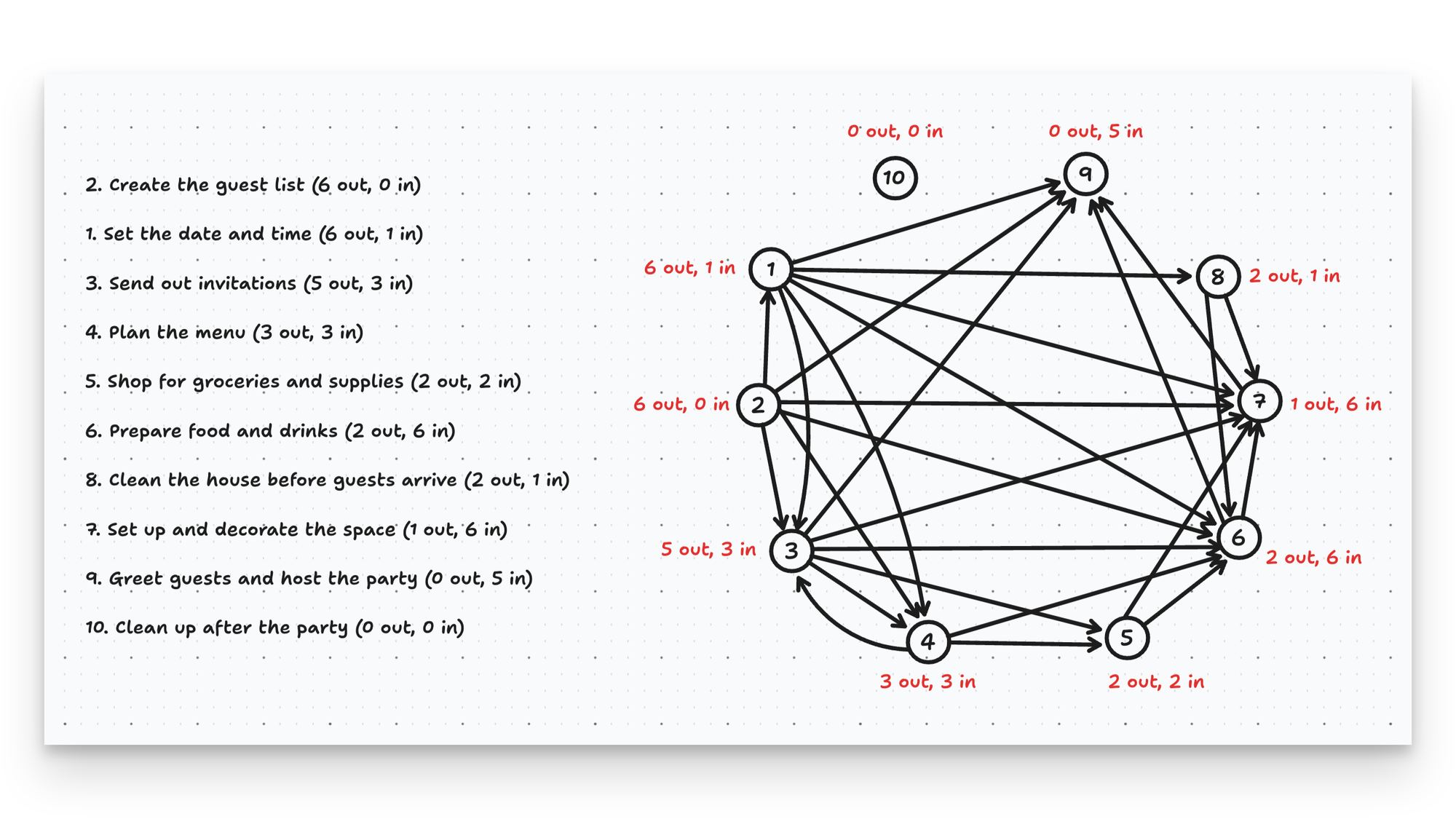
Listed by natural order of sequence and priority
- Create the guest list.
- Set the date and time.
- Send the invitations.
- Plan the menu.
- Shop for groceries and supplies.
- Prepare food and drinks.
- Clean the house before the guests arrive.
- Set up and decorate the space.
- Greet guests and host the party.
- Clean up after the party.
By sequencing work this way, you can make the project faster and easier. Prioritize based on interdependencies, not just the end outcomes.
As Bob Moesta puts it: “The way the work is shaped or unfolded reveals a natural sequence that makes the work easier and faster. Most people prioritize the outcomes rather than how the work connects and builds on each other.”
My painful experience emphasized the importance of strategic sequencing for project efficiency and success.
Before starting your next project, map out the relationships and dependencies between workstreams. Use the insights to sequence work in the best order.
Your guide to unfolding the interrelationship
- Grab a piece of paper or open a digital whiteboard like tldraw.
- List all project tasks, big or small, without worrying about order or priority.
- Number the tasks for easier reference in the following steps.
- Arrange the numbered tasks in a circle on your paper or whiteboard.
- For each task, ask yourself, “Does doing this work help with any other tasks on the list?” Look at each individually.
- If a task helps another, draw an arrow from the helping task to the helped task. Repeat this for every task, compared to all others.
- Count each task’s outgoing and incoming arrows and mark the numbers next to it.
- Order the tasks based on the number of outgoing arrows, from most to least. Prioritize tasks with the most first, as they enable other work.
- Use the dependency-based map and prioritized list to guide your project planning, scheduling, and execution. Work on tasks in the optimal order to minimize rework and delays.
- (Optional) Break down complex tasks into sub-tasks and analyze their dependencies for finer sequencing.
Start getting your team unblocked today.
Dependency-based sequencing is a game-changer for managing complex projects.
By unfolding the interrelationship between tasks, you can avoid costly rework, enable smoother workflows, and ultimately achieve your goals faster.
It’s not always intuitive and may require some upfront education and advocacy.
But the payoff is immense. When you get the sequence right, you set your team up for success from day 1.
You create the conditions for momentum, motivation, and rapid innovation.
So, take a step back the next time you plan a project. Look beyond the individual tasks and desired outcomes. Map out the dependencies, and let them guide your path forward.
With this powerful tool, you can confidently navigate even the most complex projects. You’ll be the product manager who doesn’t just get things done but gets them done right. Everytime.
The potential is vast. The opportunity is yours. Start unfolding the interrelationship today.
Good luck!
Referenced:
- Unfolding the interrelationship diagram - Ryan Singer https://www.feltpresence.com/unfolding-the-interrelationship-diagram/
- Dependencies vs. unknowns when sequencing - Ryan Singer https://www.feltpresence.com/dependencies-vs-unknowns-when-sequencing/
- Am I working on the most important thing right now? - Chris Spiek https://www.linkedin.com/posts/cspiek_whenever-i-start-challenging-myself-with-activity-6849716719024529409-r_m2/
